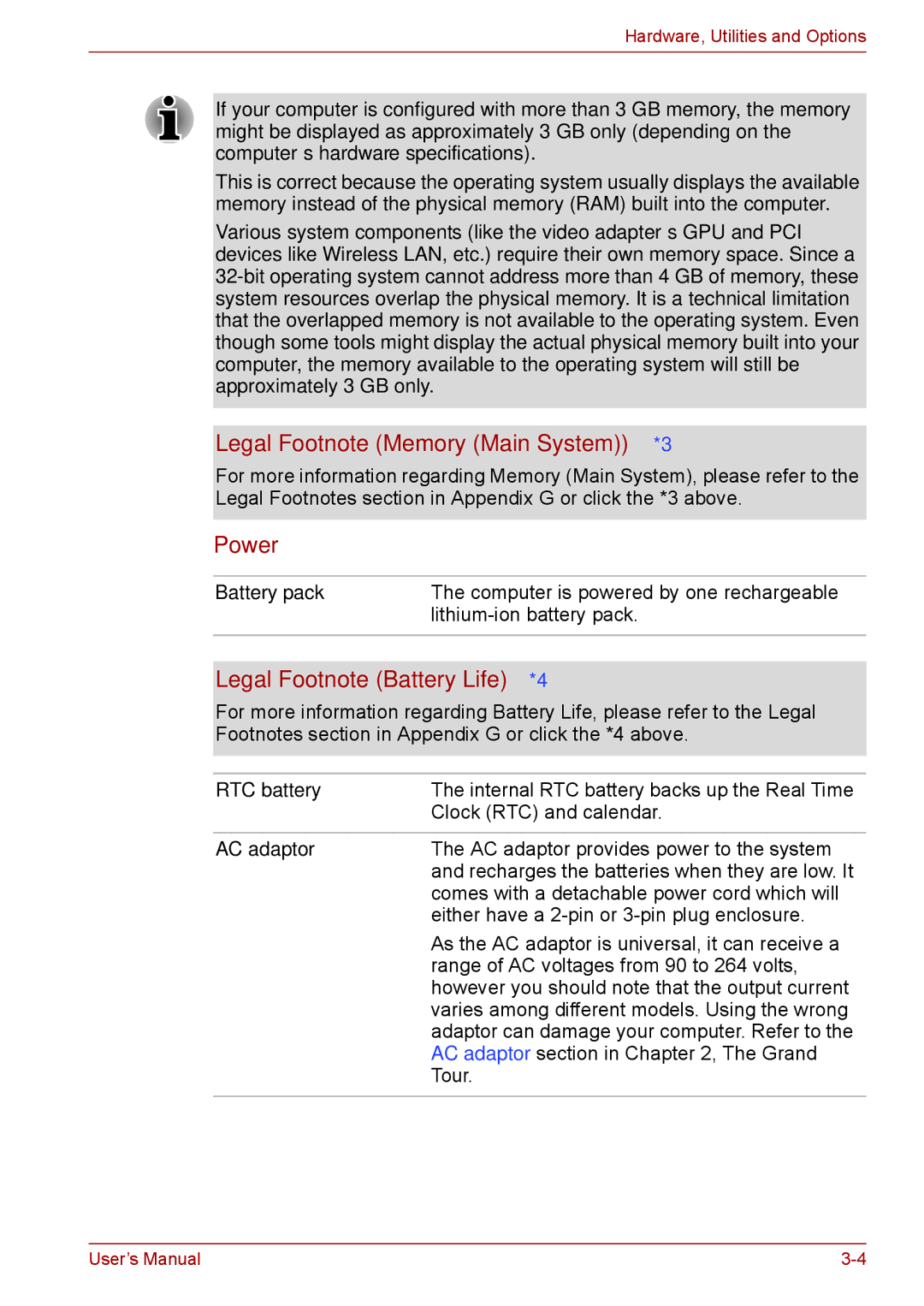
Hardware, Utilities and Options
If your computer is configured with more than 3 GB memory, the memory might be displayed as approximately 3 GB only (depending on the computer’s hardware specifications).
This is correct because the operating system usually displays the available memory instead of the physical memory (RAM) built into the computer.
Various system components (like the video adapter’s GPU and PCI devices like Wireless LAN, etc.) require their own memory space. Since a
Legal Footnote (Memory (Main System))*3
For more information regarding Memory (Main System), please refer to the Legal Footnotes section in Appendix G or click the *3 above.
Power
Battery pack | The computer is powered by one rechargeable |
| |
|
|
Legal Footnote (Battery Life)*4
For more information regarding Battery Life, please refer to the Legal Footnotes section in Appendix G or click the *4 above.
RTC battery | The internal RTC battery backs up the Real Time |
| Clock (RTC) and calendar. |
|
|
AC adaptor | The AC adaptor provides power to the system |
| and recharges the batteries when they are low. It |
| comes with a detachable power cord which will |
| either have a |
| As the AC adaptor is universal, it can receive a |
| range of AC voltages from 90 to 264 volts, |
| however you should note that the output current |
| varies among different models. Using the wrong |
| adaptor can damage your computer. Refer to the |
| AC adaptor section in Chapter 2, The Grand |
| Tour. |
|
|
User’s Manual |
